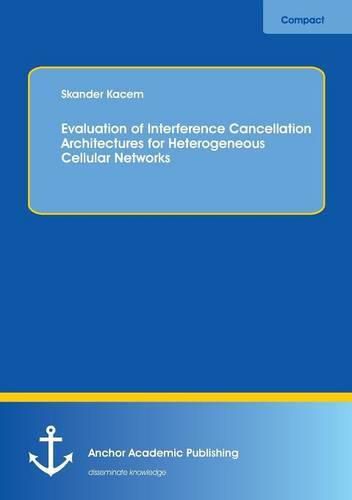Readings Newsletter
Become a Readings Member to make your shopping experience even easier.
Sign in or sign up for free!
You’re not far away from qualifying for FREE standard shipping within Australia
You’ve qualified for FREE standard shipping within Australia
The cart is loading…






This title is printed to order. This book may have been self-published. If so, we cannot guarantee the quality of the content. In the main most books will have gone through the editing process however some may not. We therefore suggest that you be aware of this before ordering this book. If in doubt check either the author or publisher’s details as we are unable to accept any returns unless they are faulty. Please contact us if you have any questions.
Diploma Thesis from the year 2012 in the subject Engineering - Communication Technology, grade: excellent, Technical University of Berlin (Intelligent Networks), language: English, abstract: With the increasing data throughput requirements, the cellular network needs to move from homogeneous to heterogeneous system. In fact, the coexistence of different types of base stations with different capabilities such as femto/pico base stations as well as relays and macro base stations in random placements should improve the coverage and the spectral efficiency of the cellular networks. However, the complexity of inter-cell interference management will grow drastically and traditional interference avoidance/mitigation approaches need to be revised. Approaching this problem at the user equipment (UE), is of great interest since it can rely on little coordination among base stations. The work presented in this thesis focuses on a downlink interference cancellation at the UE and shows that such an intelligent receiver can bring its promised benefit only if the base stations get involved in the interference cancellation, specifically in the channel estimation process. The limitations of this approach are evaluated and depending on the surrounding base stations two solutions are proposed and discussed.
$9.00 standard shipping within Australia
FREE standard shipping within Australia for orders over $100.00
Express & International shipping calculated at checkout
This title is printed to order. This book may have been self-published. If so, we cannot guarantee the quality of the content. In the main most books will have gone through the editing process however some may not. We therefore suggest that you be aware of this before ordering this book. If in doubt check either the author or publisher’s details as we are unable to accept any returns unless they are faulty. Please contact us if you have any questions.
Diploma Thesis from the year 2012 in the subject Engineering - Communication Technology, grade: excellent, Technical University of Berlin (Intelligent Networks), language: English, abstract: With the increasing data throughput requirements, the cellular network needs to move from homogeneous to heterogeneous system. In fact, the coexistence of different types of base stations with different capabilities such as femto/pico base stations as well as relays and macro base stations in random placements should improve the coverage and the spectral efficiency of the cellular networks. However, the complexity of inter-cell interference management will grow drastically and traditional interference avoidance/mitigation approaches need to be revised. Approaching this problem at the user equipment (UE), is of great interest since it can rely on little coordination among base stations. The work presented in this thesis focuses on a downlink interference cancellation at the UE and shows that such an intelligent receiver can bring its promised benefit only if the base stations get involved in the interference cancellation, specifically in the channel estimation process. The limitations of this approach are evaluated and depending on the surrounding base stations two solutions are proposed and discussed.